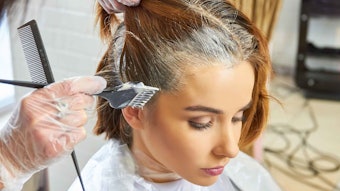“It’s green and it flies. What is it?” is a typical question one may get from a four-year old child, and the answer is something like a flying cucumber, a jet-engine-fueled frog or Batman in a disco-outfit, although the latter is a little bit outdated for this age group. If this sounds like a silly opening for a column, try to answer this question, “It is infinitely small and has infinite opportunities. What is it?"
Without question, most people in the personal care industry will know the answer to be nanotechnology; however, few actually know anything about it. What the industry does know is that nanotechnology has infinite possibilities, along with infinite safety issues associated with it. The industry is beginning to start working on this technology so that the opportunity is not missed; therefore, nanotech ingredients are being renamed as something mega-small: mega XXL is out; nano XXXXS is in.
What actually is nanotechnology? According to Andrew Maynard, chief science advisor to the Project on Emerging Nanotechnologies at the Woodrow Wilson Center, “Nanotechnology is a catch-all term for techniques, materials and devices that operate at the nanometer scale. Being defined as the design, characterization, production and application of structures, devices and systems by controlling shape and size at the nano-scale, it represents one of the most promising technologies of the 21st century and has been considered to be a new industrial revolution.”
Nanotechnology is important, but is it being used in cosmetics? Gerhard J. Nohynek, director, L'Oréal R & D, Worldwide Safety Evaluation, et al., writes: “Today, nanomaterials are increasingly used in sporting goods, tires, catalysts, electronic components, window sprays, paints, varnishes, coatings, foods, sunscreens, cosmetics and antimicrobial and antifungal preparations and are expected to be increasingly applied to the medical field in diagnosis, imaging and drug delivery.”
In cosmetics, nanoparticles are probably most well-known in sunscreens. “Nanoparticles are a subset of nano-materials and were defined as single particles with a diameter below 100 nm, although their agglomerates may be larger,” says Maynard. One of the largest applications of nanoparticles in sunscreens is where the nanoparticle diameter is normally more than 10 nm. Until now, most would have called them ultrafine inorganic sunfilters but that term does not include the gigantic opportunity of nanoparticles. And that opportunity is indeed gigantic, as the global production of nanoparticles for sunscreen products was estimated to be approximately 1,000 tons during 2003–2004 and principally consists of titanium dioxide (TiO2) and zinc oxide (ZnO) particles.
Obviously, nanotechnology is being used, but what are the exact benefits of these nanoparticles over conventionally sized TiO2 and ZnO? It sounds strange but the benefit is that you cannot see them. It need not be explained that if the particle size of an inorganic sun filter is on the order of magnitude of 25 nm, sunscreen formulations are transparent while the nanoparticles are big enough to scatter UV radiation. However, one obvious question has been: If the particles are that small, do they then penetrate the skin? The short answer to this question is a simple no, but undoubtedly ellaboration is needed.
Gerhard J. Nohynek, Jürgen Lademann, Christele Ribaud and Michael S. Roberts recently reviewed all available literature describing skin penetration of sunscreen agents in a review beautifully titled, “Grey Goo on the Skin? Nanotechnology, cosmetic and sunscreen safety.”1 They reviewed literally every paper that has been published in this field and reached the same conclusion—that nanoparticles will penetrate into the stratum corneum layers of the skin but will never reach the deeper layers, the viable epidermis or the dermis. The next issue of Skin Physiology and Pharmacology will contain the much-anticipated sequel to this article; and a sequel to such a long review within one year alone shows that the number of new publications emerging in the field of nanotechnology is enormous.
In sunscreen technology, the benefit of size reduction is the transparency; however, too small is also not good because the capability to scatter and reflect UV light is lost. But where is nanotechnology used in the rest of cosmetics? To be honest, I personally have not really seen it, although some argue that even things like liposomes are now nanotechnology. If size really matters and an antiaging nanoparticle product would penetrate to the same depth as a sunscreen nanoparticle, and that is not beyond the stratum corneum, then the use of such particles for such applications does not sound like a viable idea since they would never reach the viable epidermis and the dermis, known to be the regions where the majority of biologically active ingredients is supposed to work.
Of course, other tricks could be devised to ensure that this would happen but nanoparticles being advertised in antiaging products would envoke the need for two different types of evidence. First of all, evidence that it works by penetrating the skin, since all current skin penetration evidence indicates the opposite. Secondly, evidence that there is a benefit of the size reduction; i.e., does a non-nanosized particle not give exactly the same result? Cosmetic scientists will come up with a couple of smart ideas to get the particles to penetrate the deeper layers of the skin but the advantage of this would be to have them do so only where necessary.
If you are still concerned about the potential skin penetration of these particles, it would be suggested to read the work of Mike Roberts.2 He calculated theoretically that the skin penetration of 30 nm nanoparticles is in the order of magnitude of 10-18 nmol/mL. If the safety hazard is zero and the exposure is zero, then the safety risk has to be zero as well.
The personal care industry still needs to work to fully identify and exploit the opportunities of nanotechnology in cosmetics; simply renaming ultrafine inorganic sunfilters as nanosized inorganic sunfilters may not be enough. If that is all we do, I have to quote another question—to which I cannot provide the answer, although the questioner, a good friend and former Uniqema colleague, Chris Dederen, was much more than four years old when he posed it: “Is all this nanospeak just meganoise to extract teradollars from the gullible taxpayer or consumer with femtoreturn on investment?”
With the benefit of hindsight, let me respond with a quote from television character Special Agent Fox Mulder, who said: “If we fail to anticipate the unforeseen or expect the unexpected in a universe of infinite possibilities, we may find ourselves at the mercy of anyone or anything that cannot be programmed, categorized or easily referenced.” We have infinitely big expectations from infinitely small particles. Let’s get nanotechnology to work for us in applications beyond sun care.
Johann W. Wiechers, PhD
Technical advisor, Allured Publishing
Independent consultant for cosmetic science, JW Solutions
[email protected]
References
1. Critical Reviews in Toxicology 37 251-277, 2007
2. Mike Robers, University of Queensland in Brisbane, Australia, available at: www.fda.gov/ohrms/dockets/dockets/06n0107/06n-0107-ts00003-roberts.ppt.










